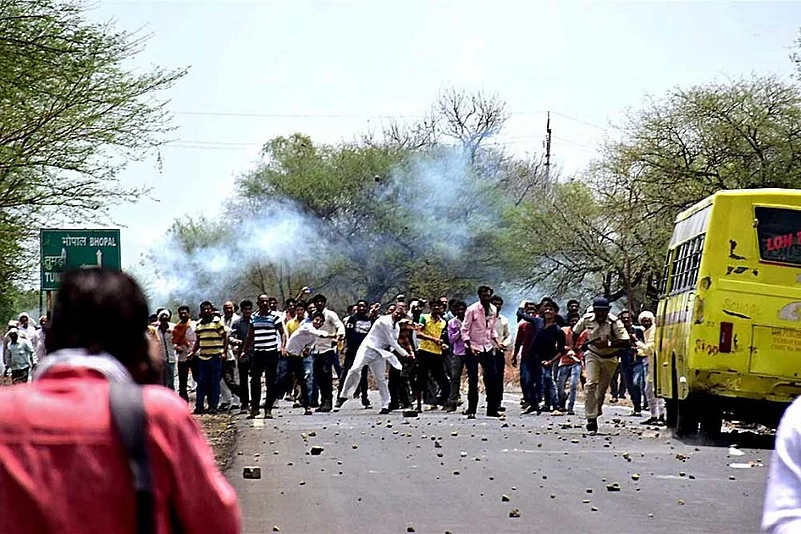In the demonetisation exercise by the Narednra Modi-led BJP government, are farmers, whose business relied largely on the cash, the biggest losers?
The current agrarian crisis that lead to the farmers' unrest in Madhya Pradesh's Mandsaur shines the spotlight on how note ban announced on November 8 last year created havoc in the industry.
A Hindustan Times report says how both the sides-- farmers and the traders-- only had demonetisation to blame as the root cause of unrest. The farmers accused the traders of gyping them by offering dirt-cheap rates sensing urgency for cash.
The farmers in the MP village, who generally sell the yields when in need of cash, were forced to undergo the rigmarole of banking process as "after notebandi, traders at the government-run markets only pay by cheque." The traders complain of "trust-deficit" that grappled the trader-farmer relationship.
Advertisement
The cheques take 20 days to clear, one of the farmers was quoted as saying to the paper, and then the banks have no currency to give. "If you want cash, the traders beat down your price, and charge two rupees on every hundred they pay," he said.
The beleagured farmers protest over demands for remunerative prices for their produce and a farm loan waiver not being met took a very violent turn leaving five of them dead.
Experts opine that the unrest was brewing for a while. The spiral of currency shortage and falling prices had already put the market on the edge. An Indian Express piece remarks how anecdotal reports suggest that the traditional agro-commercial capital was dealt a body blow by demonetisation.
Advertisement
"Where demonetisation did have an impact, however, was in the prices received during harvest: Potatoes in Farrukhabad, Uttar Pradesh, fetched below Rs 350 per quintal this February, compared to Rs 600 or more last year. Moreover, while prices in 2016 had crossed Rs 1,100/quintal by mid-May, they are stuck even now at Rs 350-400. The same goes for rabi onions in Lasalgaon, Maharashtra, that traded at an average of Rs 450 per quintal in May, as against Rs 750-800 and Rs 1,200 in the same month of the preceding two years. Farmers, likewise, sold tomatoes at Kolar, Karnataka, in early May for Rs 300-400 per quintal, down from Rs 1,500-1,600 a year ago."



















